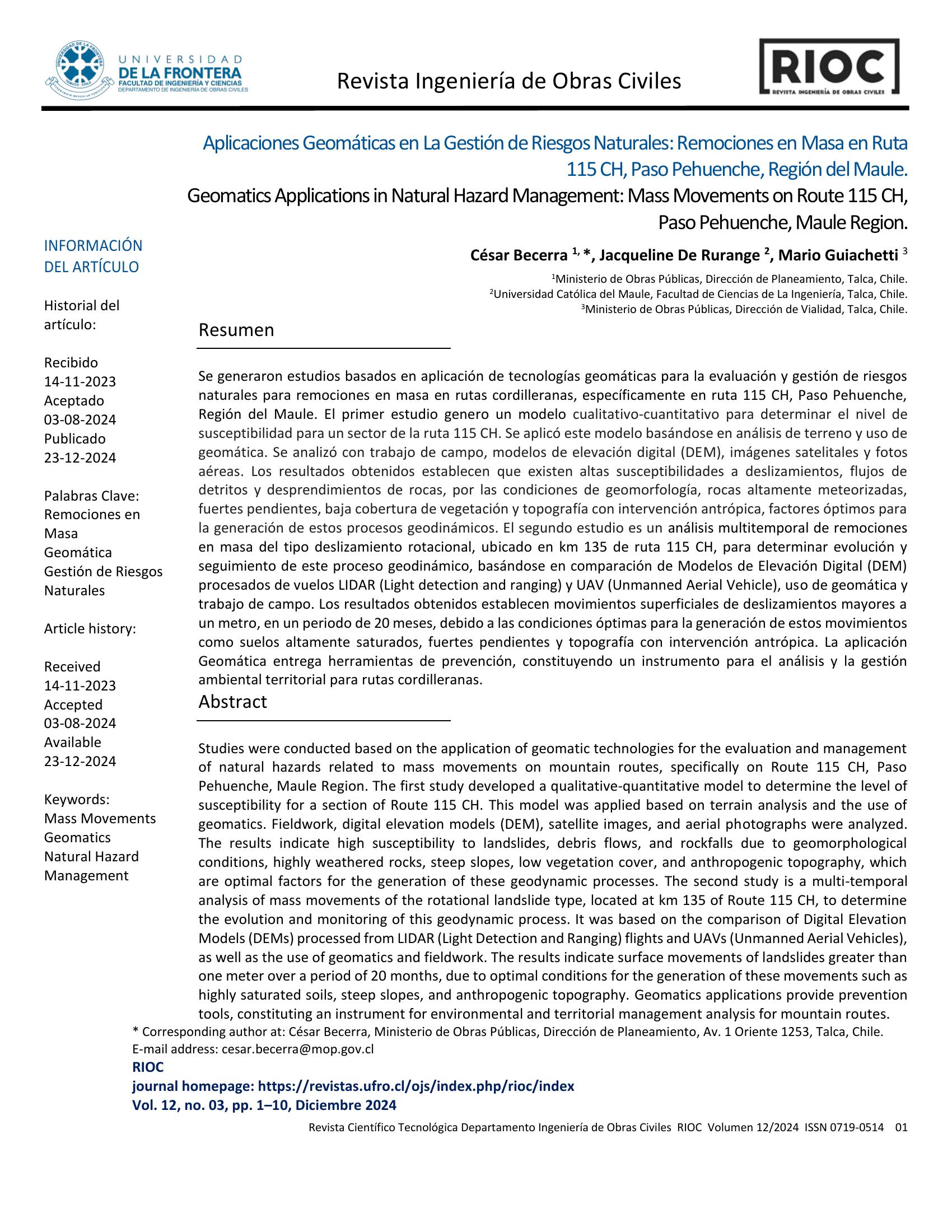Geomatics Applications in Natural Hazard Management: Mass Movements on Route 115 CH, Paso Pehuenche, Maule Region
Keywords:
Mass Movements, Geomatics, Natural Hazard ManagementAbstract
Studies were conducted based on the application of geomatic technologies for the evaluation and management of natural hazards related to mass movements on mountain routes, specifically on Route 115 CH, Paso Pehuenche, Maule Region. The first study developed a qualitative-quantitative model to determine the level of susceptibility for a section of Route 115 CH. This model was applied based on terrain analysis and the use of geomatics. Fieldwork, digital elevation models (DEM), satellite images, and aerial photographs were analyzed. The results indicate high susceptibility to landslides, debris flows, and rockfalls due to geomorphological conditions, highly weathered rocks, steep slopes, low vegetation cover, and anthropogenic topography, which are optimal factors for the generation of these geodynamic processes.The second study is a multi-temporal analysis of mass movements of the rotational landslide type, located at km 135 of Route 115 CH, to determine the evolution and monitoring of this geodynamic process. It was based on the comparison of Digital Elevation Models (DEMs) processed from LIDAR (Light Detection and Ranging) flights and UAVs (Unmanned Aerial Vehicles), as well as the use of geomatics and fieldwork. The results indicate surface movements of landslides greater than one meter over a period of 20 months, due to optimal conditions for the generation of these movements such as highly saturated soils, steep slopes, and anthropogenic topography. Geomatics applications provide prevention tools, constituting an instrument for environmental and territorial management analysis for mountain routes.
Downloads

Downloads
Published
Versions
- 2025-07-30 (3)
- 2025-07-30 (2)
- 2024-12-23 (1)
How to Cite
Issue
Section
License
Copyright (c) 2024 César Becerra, Mario Guiachetti, Jacqueline De Rurange

This work is licensed under a Creative Commons Attribution 4.0 International License.
The authors who publish in this journal accept the following conditions:
- The authors retain the copyright and assign to the magazine the right of the first publication, with the work registered with the Creative Commons attribution license, which allows third parties to use the published information whenever they mention the authorship of the work and the First publication in this journal.
- Authors may make other independent and additional contractual arrangements for non-exclusive distribution of the version of the article published in this journal (eg, include it in an institutional repository or publish it in a book) as long as it clearly indicates that the work Was first published in this magazine.
- Authors are encouraged and encouraged to publish their work on the Internet (for example, on institutional or personal pages) before and during the review and publication process, as it can lead to productive exchanges and a greater and faster dissemination of work Published (see The Effect of Open Access).







